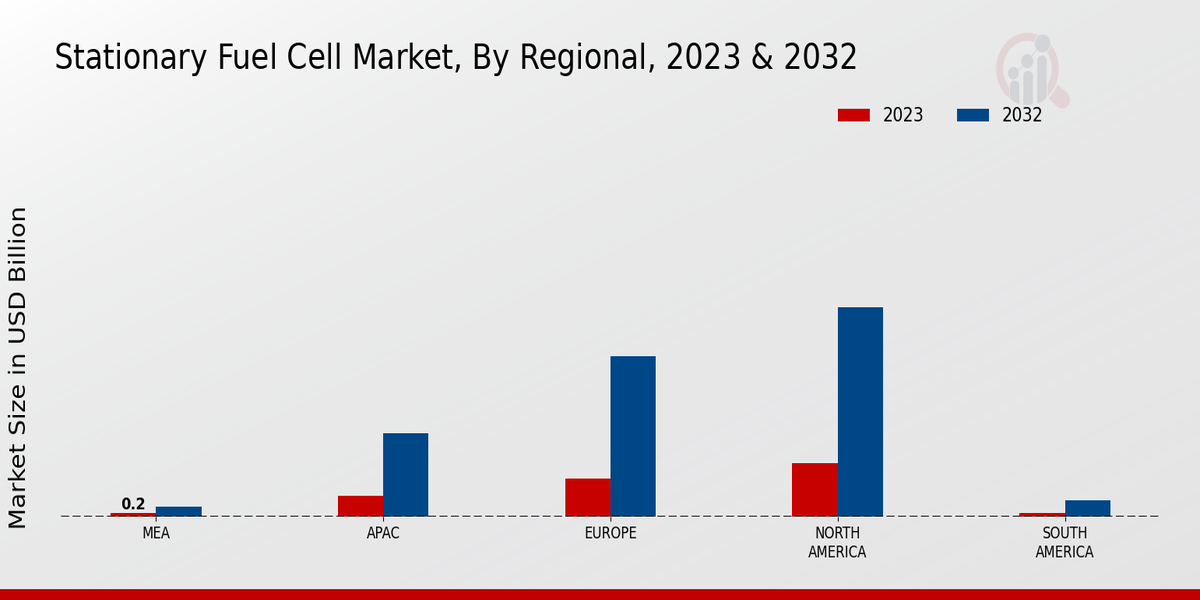Government Incentives and Support
Government incentives and support are crucial drivers of the Global Stationary Fuel Cell Market Industry, as many nations are implementing policies to encourage the adoption of fuel cell technologies. Financial incentives, such as tax credits and grants, are being offered to businesses and consumers to facilitate the transition to cleaner energy solutions. For instance, various countries have established funding programs aimed at supporting research and development in fuel cell technologies. This supportive regulatory environment is likely to stimulate market growth, contributing to an anticipated compound annual growth rate (CAGR) of 16.54% from 2025 to 2035, as more stakeholders recognize the benefits of fuel cells.
Diverse Applications Across Industries
The versatility of stationary fuel cells across various industries is a significant driver of the Global Stationary Fuel Cell Market Industry. Fuel cells are being utilized in sectors such as telecommunications, data centers, and residential applications, providing reliable backup power and reducing dependence on grid electricity. For example, telecommunications companies are increasingly adopting fuel cells to ensure uninterrupted service during power outages. This diverse applicability not only broadens the market scope but also enhances the attractiveness of fuel cells as a viable energy solution. As industries continue to explore innovative applications, the market is poised for substantial growth.
Increasing Demand for Clean Energy Solutions
The Global Stationary Fuel Cell Market Industry is experiencing a surge in demand for clean energy solutions as governments and organizations strive to reduce carbon emissions. This trend is driven by the global commitment to sustainability and climate change mitigation. For instance, countries are implementing stringent regulations and incentives to promote the adoption of clean technologies. The market is projected to reach 6.6 USD Billion in 2024, reflecting a growing recognition of the environmental benefits associated with fuel cells. This shift towards cleaner energy sources is likely to bolster investments in stationary fuel cell technology, further enhancing its market presence.
Rising Energy Costs and Energy Security Concerns
Rising energy costs and energy security concerns are increasingly influencing the Global Stationary Fuel Cell Market Industry. As traditional energy sources become more expensive and less reliable, organizations are seeking alternative solutions to ensure energy security. Fuel cells offer a decentralized energy generation option, which can mitigate risks associated with energy supply disruptions. The growing need for reliable and cost-effective energy solutions is likely to drive investments in stationary fuel cells. This trend aligns with the projected market growth, as the industry adapts to the evolving energy landscape and seeks to provide sustainable alternatives.
Technological Advancements in Fuel Cell Technology
Technological advancements play a pivotal role in the Global Stationary Fuel Cell Market Industry, as innovations continue to enhance the efficiency and performance of fuel cells. Developments in materials, such as proton exchange membranes and catalysts, are contributing to improved energy conversion rates and reduced costs. For example, advancements in solid oxide fuel cells have demonstrated higher efficiency levels, making them more competitive against traditional energy sources. These innovations are expected to drive market growth, with projections indicating a market value of 35.5 USD Billion by 2035. As technology evolves, the potential for widespread adoption of stationary fuel cells increases.
























Leave a Comment